Yunke Zhang
From Scores to Preferences: Redefining MOS Benchmarking for Speech Quality Reward Modeling
Oct 01, 2025Abstract:Assessing the perceptual quality of synthetic speech is crucial for guiding the development and refinement of speech generation models. However, it has traditionally relied on human subjective ratings such as the Mean Opinion Score (MOS), which depend on manual annotations and often suffer from inconsistent rating standards and poor reproducibility. To address these limitations, we introduce MOS-RMBench, a unified benchmark that reformulates diverse MOS datasets into a preference-comparison setting, enabling rigorous evaluation across different datasets. Building on MOS-RMBench, we systematically construct and evaluate three paradigms for reward modeling: scalar reward models, semi-scalar reward models, and generative reward models (GRMs). Our experiments reveal three key findings: (1) scalar models achieve the strongest overall performance, consistently exceeding 74% accuracy; (2) most models perform considerably worse on synthetic speech than on human speech; and (3) all models struggle on pairs with very small MOS differences. To improve performance on these challenging pairs, we propose a MOS-aware GRM that incorporates an MOS-difference-based reward function, enabling the model to adaptively scale rewards according to the difficulty of each sample pair. Experimental results show that the MOS-aware GRM significantly improves fine-grained quality discrimination and narrows the gap with scalar models on the most challenging cases. We hope this work will establish both a benchmark and a methodological framework to foster more rigorous and scalable research in automatic speech quality assessment.
Speech-Language Models with Decoupled Tokenizers and Multi-Token Prediction
Jun 14, 2025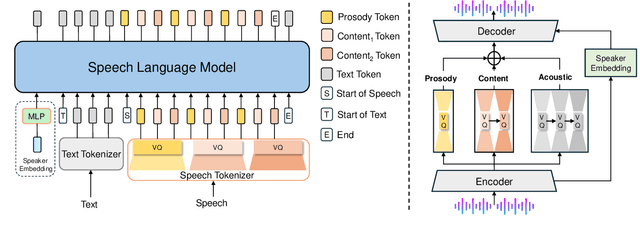
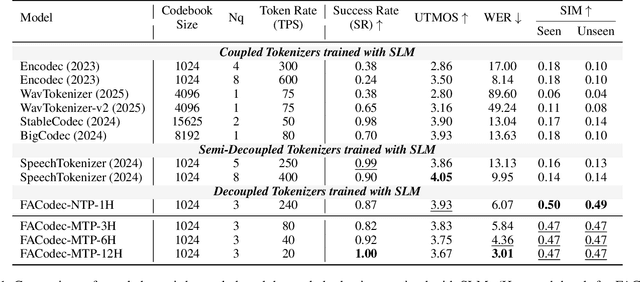
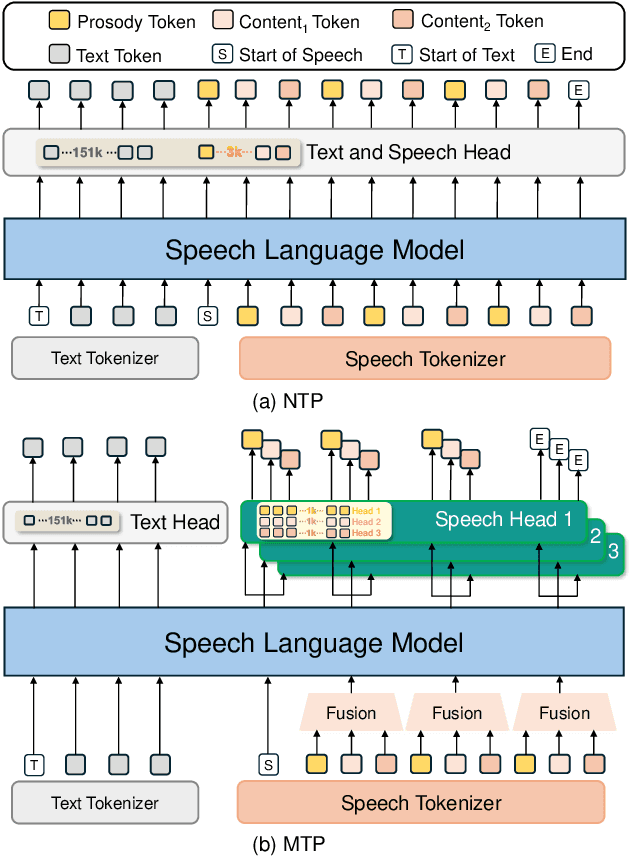
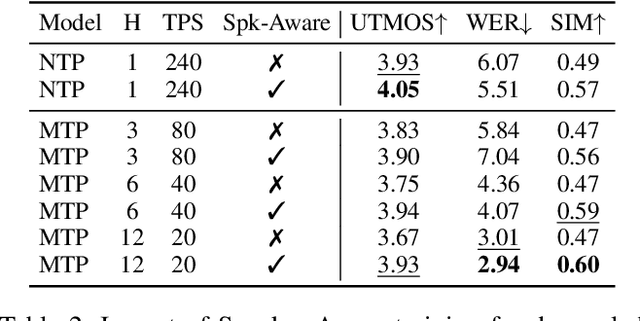
Abstract:Speech-language models (SLMs) offer a promising path toward unifying speech and text understanding and generation. However, challenges remain in achieving effective cross-modal alignment and high-quality speech generation. In this work, we systematically investigate the impact of key components (i.e., speech tokenizers, speech heads, and speaker modeling) on the performance of LLM-centric SLMs. We compare coupled, semi-decoupled, and fully decoupled speech tokenizers under a fair SLM framework and find that decoupled tokenization significantly improves alignment and synthesis quality. To address the information density mismatch between speech and text, we introduce multi-token prediction (MTP) into SLMs, enabling each hidden state to decode multiple speech tokens. This leads to up to 12$\times$ faster decoding and a substantial drop in word error rate (from 6.07 to 3.01). Furthermore, we propose a speaker-aware generation paradigm and introduce RoleTriviaQA, a large-scale role-playing knowledge QA benchmark with diverse speaker identities. Experiments demonstrate that our methods enhance both knowledge understanding and speaker consistency.
A Survey of Large Language Model-Powered Spatial Intelligence Across Scales: Advances in Embodied Agents, Smart Cities, and Earth Science
Apr 14, 2025Abstract:Over the past year, the development of large language models (LLMs) has brought spatial intelligence into focus, with much attention on vision-based embodied intelligence. However, spatial intelligence spans a broader range of disciplines and scales, from navigation and urban planning to remote sensing and earth science. What are the differences and connections between spatial intelligence across these fields? In this paper, we first review human spatial cognition and its implications for spatial intelligence in LLMs. We then examine spatial memory, knowledge representations, and abstract reasoning in LLMs, highlighting their roles and connections. Finally, we analyze spatial intelligence across scales -- from embodied to urban and global levels -- following a framework that progresses from spatial memory and understanding to spatial reasoning and intelligence. Through this survey, we aim to provide insights into interdisciplinary spatial intelligence research and inspire future studies.
Boosting Diffusion-Based Text Image Super-Resolution Model Towards Generalized Real-World Scenarios
Mar 11, 2025Abstract:Restoring low-resolution text images presents a significant challenge, as it requires maintaining both the fidelity and stylistic realism of the text in restored images. Existing text image restoration methods often fall short in hard situations, as the traditional super-resolution models cannot guarantee clarity, while diffusion-based methods fail to maintain fidelity. In this paper, we introduce a novel framework aimed at improving the generalization ability of diffusion models for text image super-resolution (SR), especially promoting fidelity. First, we propose a progressive data sampling strategy that incorporates diverse image types at different stages of training, stabilizing the convergence and improving the generalization. For the network architecture, we leverage a pre-trained SR prior to provide robust spatial reasoning capabilities, enhancing the model's ability to preserve textual information. Additionally, we employ a cross-attention mechanism to better integrate textual priors. To further reduce errors in textual priors, we utilize confidence scores to dynamically adjust the importance of textual features during training. Extensive experiments on real-world datasets demonstrate that our approach not only produces text images with more realistic visual appearances but also improves the accuracy of text structure.
Causal Discovery and Inference towards Urban Elements and Associated Factors
Mar 09, 2025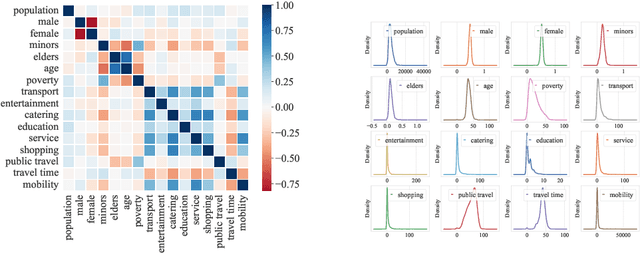
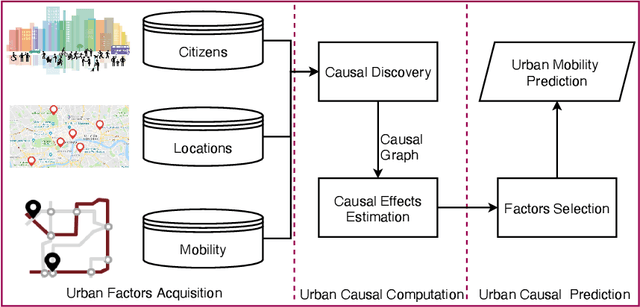
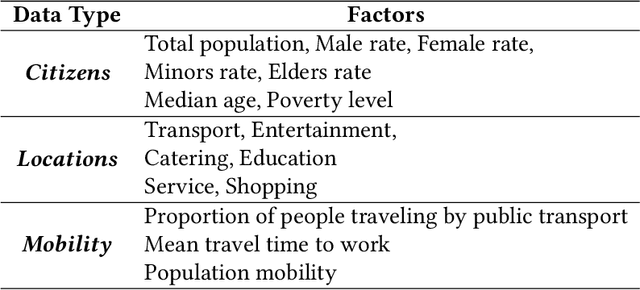

Abstract:To uncover the city's fundamental functioning mechanisms, it is important to acquire a deep understanding of complicated relationships among citizens, location, and mobility behaviors. Previous research studies have applied direct correlation analysis to investigate such relationships. Nevertheless, due to the ubiquitous confounding effects, empirical correlation analysis may not accurately reflect underlying causal relationships among basic urban elements. In this paper, we propose a novel urban causal computing framework to comprehensively explore causalities and confounding effects among a variety of factors across different types of urban elements. In particular, we design a reinforcement learning algorithm to discover the potential causal graph, which depicts the causal relations between urban factors. The causal graph further serves as the guidance for estimating causal effects between pair-wise urban factors by propensity score matching. After removing the confounding effects from correlations, we leverage significance levels of causal effects in downstream urban mobility prediction tasks. Experimental studies on open-source urban datasets show that the discovered causal graph demonstrates a hierarchical structure, where citizens affect locations, and they both cause changes in urban mobility behaviors. Experimental results in urban mobility prediction tasks further show that the proposed method can effectively reduce confounding effects and enhance performance of urban computing tasks.
EPR-GAIL: An EPR-Enhanced Hierarchical Imitation Learning Framework to Simulate Complex User Consumption Behaviors
Mar 09, 2025

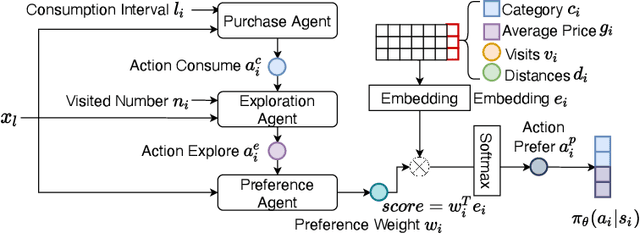

Abstract:User consumption behavior data, which records individuals' online spending history at various types of stores, has been widely used in various applications, such as store recommendation, site selection, and sale forecasting. However, its high worth is limited due to deficiencies in data comprehensiveness and changes of application scenarios. Thus, generating high-quality sequential consumption data by simulating complex user consumption behaviors is of great importance to real-world applications. Two branches of existing sequence generation methods are both limited in quality. Model-based methods with simplified assumptions fail to model the complex decision process of user consumption, while data-driven methods that emulate real-world data are prone to noises, unobserved behaviors, and dynamic decision space. In this work, we propose to enhance the fidelity and trustworthiness of the data-driven Generative Adversarial Imitation Learning (GAIL) method by blending it with the Exploration and Preferential Return EPR model . The core idea of our EPR-GAIL framework is to model user consumption behaviors as a complex EPR decision process, which consists of purchase, exploration, and preference decisions. Specifically, we design the hierarchical policy function in the generator as a realization of the EPR decision process and employ the probability distributions of the EPR model to guide the reward function in the discriminator. Extensive experiments on two real-world datasets of user consumption behaviors on an online platform demonstrate that the EPR-GAIL framework outperforms the best state-of-the-art baseline by over 19\% in terms of data fidelity. Furthermore, the generated consumption behavior data can improve the performance of sale prediction and location recommendation by up to 35.29% and 11.19%, respectively, validating its advantage for practical applications.
Causality Enhanced Origin-Destination Flow Prediction in Data-Scarce Cities
Mar 09, 2025Abstract:Accurate origin-destination (OD) flow prediction is of great importance to developing cities, as it can contribute to optimize urban structures and layouts. However, with the common issues of missing regional features and lacking OD flow data, it is quite daunting to predict OD flow in developing cities. To address this challenge, we propose a novel Causality-Enhanced OD Flow Prediction (CE-OFP), a unified framework that aims to transfer urban knowledge between cities and achieve accuracy improvements in OD flow predictions across data-scarce cities. In specific, we propose a novel reinforcement learning model to discover universal causalities among urban features in data-rich cities and build corresponding causal graphs. Then, we further build Causality-Enhanced Variational Auto-Encoder (CE-VAE) to incorporate causal graphs for effective feature reconstruction in data-scarce cities. Finally, with the reconstructed features, we devise a knowledge distillation method with a graph attention network to migrate the OD prediction model from data-rich cities to data-scare cities. Extensive experiments on two pairs of real-world datasets validate that the proposed CE-OFP remarkably outperforms state-of-the-art baselines, which can reduce the RMSE of OD flow prediction for data-scarce cities by up to 11%.
Towards Large Reasoning Models: A Survey on Scaling LLM Reasoning Capabilities
Jan 17, 2025



Abstract:Language has long been conceived as an essential tool for human reasoning. The breakthrough of Large Language Models (LLMs) has sparked significant research interest in leveraging these models to tackle complex reasoning tasks. Researchers have moved beyond simple autoregressive token generation by introducing the concept of "thought" -- a sequence of tokens representing intermediate steps in the reasoning process. This innovative paradigm enables LLMs' to mimic complex human reasoning processes, such as tree search and reflective thinking. Recently, an emerging trend of learning to reason has applied reinforcement learning (RL) to train LLMs to master reasoning processes. This approach enables the automatic generation of high-quality reasoning trajectories through trial-and-error search algorithms, significantly expanding LLMs' reasoning capacity by providing substantially more training data. Furthermore, recent studies demonstrate that encouraging LLMs to "think" with more tokens during test-time inference can further significantly boost reasoning accuracy. Therefore, the train-time and test-time scaling combined to show a new research frontier -- a path toward Large Reasoning Model. The introduction of OpenAI's o1 series marks a significant milestone in this research direction. In this survey, we present a comprehensive review of recent progress in LLM reasoning. We begin by introducing the foundational background of LLMs and then explore the key technical components driving the development of large reasoning models, with a focus on automated data construction, learning-to-reason techniques, and test-time scaling. We also analyze popular open-source projects at building large reasoning models, and conclude with open challenges and future research directions.
Towards Large Reasoning Models: A Survey of Reinforced Reasoning with Large Language Models
Jan 16, 2025



Abstract:Language has long been conceived as an essential tool for human reasoning. The breakthrough of Large Language Models (LLMs) has sparked significant research interest in leveraging these models to tackle complex reasoning tasks. Researchers have moved beyond simple autoregressive token generation by introducing the concept of "thought" -- a sequence of tokens representing intermediate steps in the reasoning process. This innovative paradigm enables LLMs' to mimic complex human reasoning processes, such as tree search and reflective thinking. Recently, an emerging trend of learning to reason has applied reinforcement learning (RL) to train LLMs to master reasoning processes. This approach enables the automatic generation of high-quality reasoning trajectories through trial-and-error search algorithms, significantly expanding LLMs' reasoning capacity by providing substantially more training data. Furthermore, recent studies demonstrate that encouraging LLMs to "think" with more tokens during test-time inference can further significantly boost reasoning accuracy. Therefore, the train-time and test-time scaling combined to show a new research frontier -- a path toward Large Reasoning Model. The introduction of OpenAI's o1 series marks a significant milestone in this research direction. In this survey, we present a comprehensive review of recent progress in LLM reasoning. We begin by introducing the foundational background of LLMs and then explore the key technical components driving the development of large reasoning models, with a focus on automated data construction, learning-to-reason techniques, and test-time scaling. We also analyze popular open-source projects at building large reasoning models, and conclude with open challenges and future research directions.
Understanding World or Predicting Future? A Comprehensive Survey of World Models
Nov 21, 2024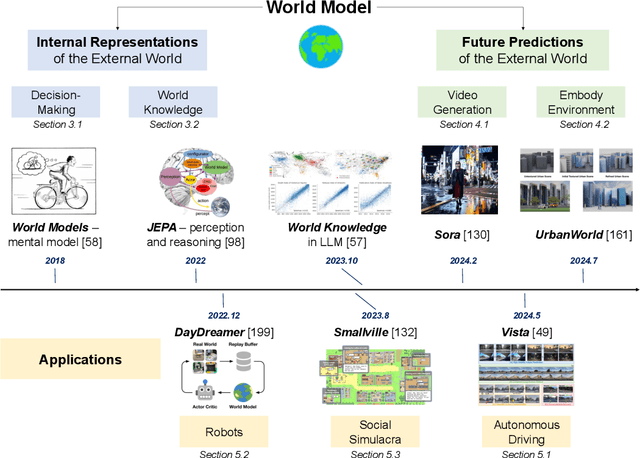


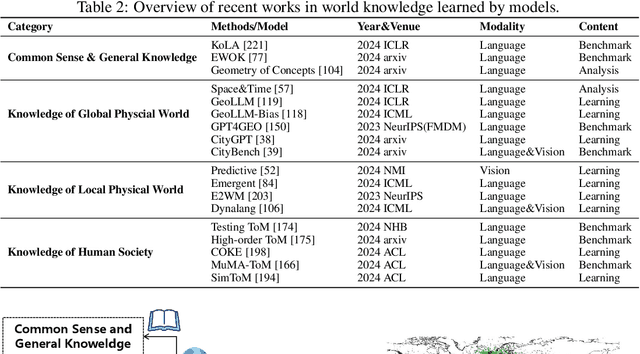
Abstract:The concept of world models has garnered significant attention due to advancements in multimodal large language models such as GPT-4 and video generation models such as Sora, which are central to the pursuit of artificial general intelligence. This survey offers a comprehensive review of the literature on world models. Generally, world models are regarded as tools for either understanding the present state of the world or predicting its future dynamics. This review presents a systematic categorization of world models, emphasizing two primary functions: (1) constructing internal representations to understand the mechanisms of the world, and (2) predicting future states to simulate and guide decision-making. Initially, we examine the current progress in these two categories. We then explore the application of world models in key domains, including autonomous driving, robotics, and social simulacra, with a focus on how each domain utilizes these aspects. Finally, we outline key challenges and provide insights into potential future research directions.
 Add to Chrome
Add to Chrome Add to Firefox
Add to Firefox Add to Edge
Add to Edge